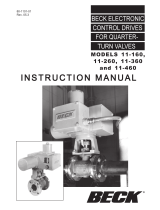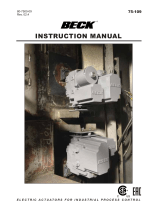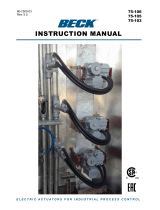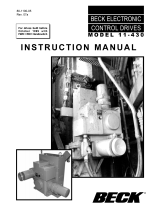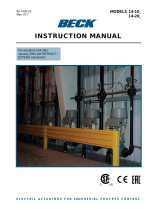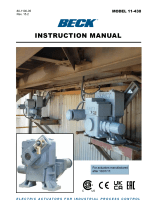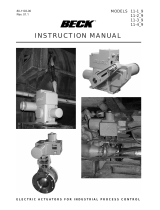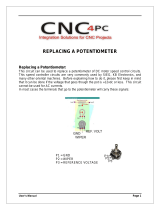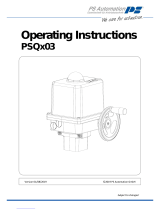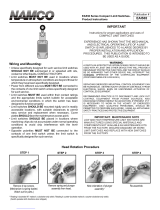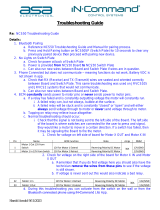
80-1100-00, Rev. 7.2
20
POWER QUALITY
Power quality disturbances such as power
outages, transient voltages, harmonic distortions,
and electrical noise will adversely affect your
actuator performance. Protecting your actuator
from these conditions can reduce downtime and
promote longer life for the equipment. Following
the industry accepted standards below will help
protect your actuator.
aSelect wiring materials according to the
correct ampacity ratings dictated by national
and local regulations.
aShielded, twisted pair cables can be used for
signal connections to avoid being affected by
electrical noise. These signal wires, based
on Noise Susceptibility Level (NSL) per
IEEE-518, fall into the level 1 classification.
A braided shield will be more effective than
a wrapped foil shield. Signal wire shields
should be connected to the actuator casting
grounding screw. If grounding at the signal
source is required, then the shield should not
be grounded at the actuator.
aRaceways such as conduits and trays must
be grounded at both ends to properly meet
immunity requirements.
aAn AC power ground connection should be
made between the power source and the Beck
actuator. Grounding connections including
wire and metal conduit are permitted, but the
actuator-grounding conductor may not be
connected to a structured metal frame of a
building.
aSurge suppression equipment that meets
Underwriters Laboratory (UL) Standard 1449
may be used to protect against transient
voltage conditions.
aPower Conditioners may be used to regulate
the supply voltage and maintain a constant
voltage level. They are helpful in protection
against voltage sags and swells, as well as
some measure of electrical noise protection.
aHarmonic lters may be used to minimize the
eects of supply voltage waveform distortions
and are used in applications that incur a large
amount of high-frequency electronic noise.
CAUTION
Always close covers immediately
after installation or service to prevent
moisture or other foreign matter
from entering the actuator.
ELECTRICAL INSTALLATION
Two 1” N.P.T. conduit connections are provided
for power and signal wiring to the actuator.
Conduits should be routed from below the actuator
so that condensation and other contaminants flow
away from the conduit. All conduit entrances must
be properly sealed in accordance with National
Standards or Regulatory Authorities.
Power and signal wires should be routed to
the actuator separately and be either shielded
cables or installed in conductive conduit and/or
cable trays.
Refer to the wiring diagram furnished with
your Beck actuator for proper AC power and signal
connections. The customer must supply 120 V ac to
power the actuator (standard configuration). The
120 V ac line connects to terminal C and neutral to
terminal B. Other available power options include
208, 240, 380, 415, 480 & 575 V ac.
It is advisable to provide normal short circuit
protection on the AC power line. A copy of the
wiring diagram is shipped with each actuator and
is fastened to the inside of the terminal block cover.
If there is no wiring diagram available, you may
obtain a copy from Beck by providing the serial
number of your actuator.
Connection of a 4-20 mA Demand signal
should be made to terminals AA (+) and BB (–).
For maximum safety, the Beck actuator body
should be grounded. Use the green grounding
screw in the wiring compartment of the actuator.
TERMINAL SCREW TORQUES
Each terminal screw should be torqued to the
proper specification upon landing the wire.
Torque
Models Terminals (lb-in) (N•m)
All Models A–V 16 1.8
AA–EE 12 1.4
11-1__ FF–KK* 9 1.0
1–3* 9 1.0
11-2__
11-3__
11-4__
FF–SS* 9 1.0
1–3* 20 2.3
* Terminals included only with certain optional features.
INSTALLATION Electrical




















